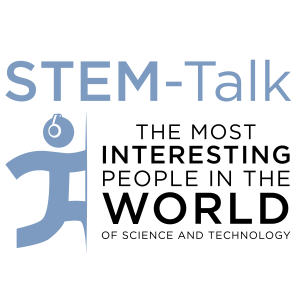
Episode 67: Doug Wallace talks about mitochondria, our human origins and the possibility of mitochondria-targeted therapies
 2018-07-03
2018-07-03
Download
Right click and do "save link as"
Today’s guest is Dr. Douglas Wallace, the director of the Center for Mitochondrial and Epigenomic Medicine at Children's Hospital of Philadelphia.
He is internationally known as the founder of mitochondrial genetics. Mitochondria are tiny structures within cells that produce 90 percent of a person’s energy and play an essential role in health and disease.
Dr. Wallace's groundbreaking research in the 1970s defined the genetics of DNA within the mitochondria, as distinct from DNA in a cell's nucleus. His research has shown that mitochondrial DNA is inherited exclusively from the mother and that genetic alterations in the mitochondrial DNA can result in a wide range of metabolic and degenerative diseases.
One of Dr. Wallace’s seminal contributions has been to use a mitochondrial DNA variation to reconstruct human origins and the ancient migrations of women. These studies revealed that humans arose in Africa approximately 200,000 years ago, and that women as well as men left Africa about 65,000 years ago to colonize Eurasia.
Dr. Wallace was inducted last year into the Italian Academy of Sciences during the academy’s 234th annual meeting in Rome. Founded in 1782, membership in the academy is limited to 40 Italian scientists and 25 foreign members. Over the years, the academy has seen such notable members as Albert Einstein, Benjamin Franklin, Louis Pasteur and Rita Levi-Montalcini.
Links:
Dr. Wallace’s Children's Hospital of Philadelphia bio:
https://www.chop.edu/doctors/wallace-douglas-c
Mitochondrial DNA Variation in Human Radiation and Disease
Wallace Cell Perspective 9-26-15
Mitochondrial DNA Mutation Associated with Leber's Hereditary Optic Neuropathy
Wallace LHON 11778 Science 1988
A Mitochondrial Bioenergetic Etiology of Disease
Wallace JCI Wallace JAMA Psychiatry2017
Association Between Mitochondrial DNA Haplogroup Variation and Autism Disorders
Chalkia_jamapsychiatry_2017
Maternal Inheritance of Human Mitochondrial DNA
Giles Maternal Inheritance 1980
Show notes:
3:32: Dawn opens the interview by mentioning that Doug grew up exploring the woods outside his neighborhood in the suburbs of Annapolis, Maryland. Dawn asks if his time outdoors sparked his interest in science when he was young.
4:14: Dawn asks Doug what led him to attend Cornell University after graduating from high school.
5:15: Doug talks about his decision to focus on genetics in school.
6:21: Dawn asks Doug how he selected Yale for his graduate studies.
7:49: Ken mentions that mitochondria can be considered bacterial “power-pack” organelles that generate the majority of a cell’s energy, as well as much else. He goes on to say that mitochondria account for about 30 percent of our bodyweight, and that there are roughly 500 trillion of them. He finally points out that despite all this that they are surprisingly under attended to and asks Doug to give listeners a brief mitochondria 101.
13:37: Ken mentions how he’s glad Doug answered the question of how mitochondria ended up losing 99 percent of their original genes, considering that mitochondria used to be free living bacteria with roughly 1,500 genes.
15:25: Dawn points out that Doug and his colleagues are credited with founding the field of human mitochondrial genetics more than 40 years ago. She then asks if anyone else was doing similar research when Doug started working on human mitochondrial genetics during his post-doc.
17:55: Following his post-doc at Yale, Doug spent seven years at Stanford University School of Medicine. Dawn asks Doug about his work during this time.
22:01: Dawn mentions that in 1983 Doug became the professor of biochemistry, anthropology and pediatrics at Emory University in Atlanta. During this time, he also was chairperson and senior editor of the Mitochondrial DNA Locus-Specific Database for the Human Genome Organization. Dawn asks what that work entailed.
view more
More Episodes
012345678910111213141516171819
Create your
podcast in
minutes
- Full-featured podcast site
- Unlimited storage and bandwidth
- Comprehensive podcast stats
- Distribute to Apple Podcasts, Spotify, and more
- Make money with your podcast
It is Free
- Privacy Policy
- Cookie Policy
- Terms of Use
- Consent Preferences
- Copyright © 2015-2024 Podbean.com



